Many grebe species are well-known for eating feathers, both as adults and as youngsters. The behavior documented in this series may have been the parent encouraging its chick to have an interest in this new item in its “diet”.
- Each of these images is presented in the order it was taken. I’ve posted one of them previously but I’ve never posted the series as a documentation of behavior.
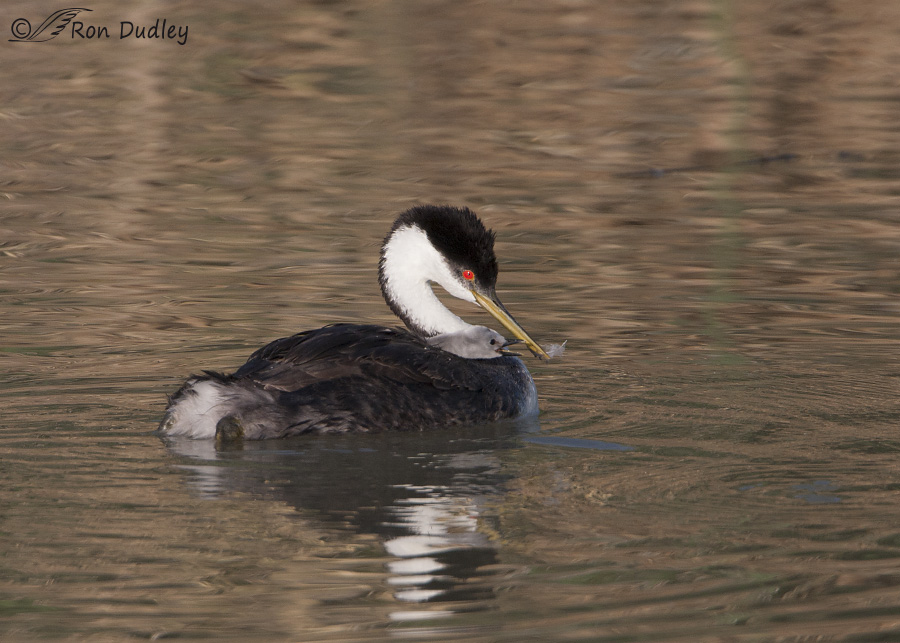
1/2000, f/8, ISO 500, Canon 40D, Canon EF 500mm f/4L IS USM + 1.4 tc, not baited, set up or called in
I photographed this adult Western Grebe and chick at Bear River MBR in July of 2009. By the time I was able to get my lens trained on them the parent had already snagged the feather from the surface of the water and was presenting it to the youngster who was obviously eager to accept it. But immediately after this shot…
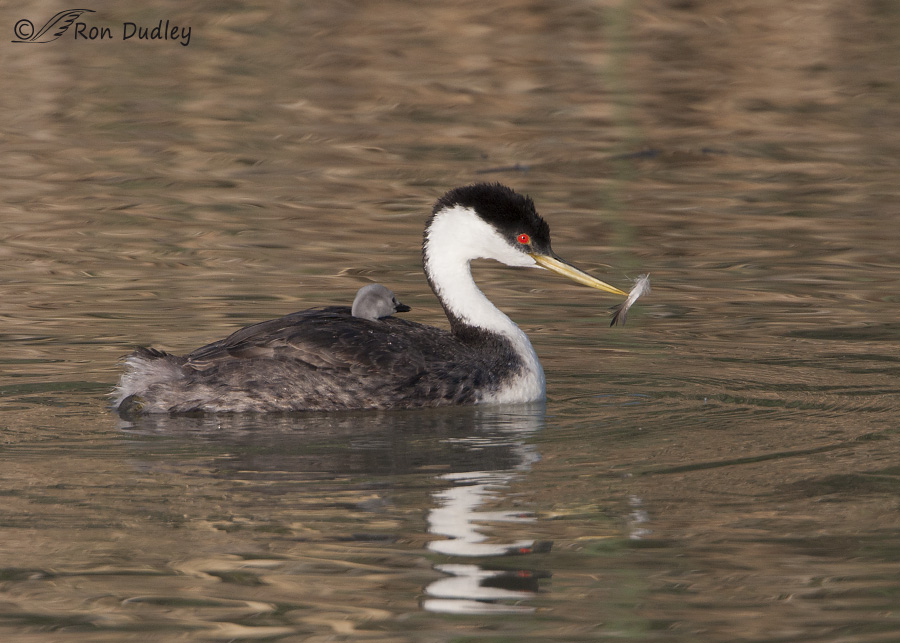
1/2000, f/8, ISO 500, Canon 40D, Canon EF 500mm f/4L IS USM + 1.4 tc, not baited, set up or called in
the adult moved the feather out of reach so the chick momentarily lost interest.
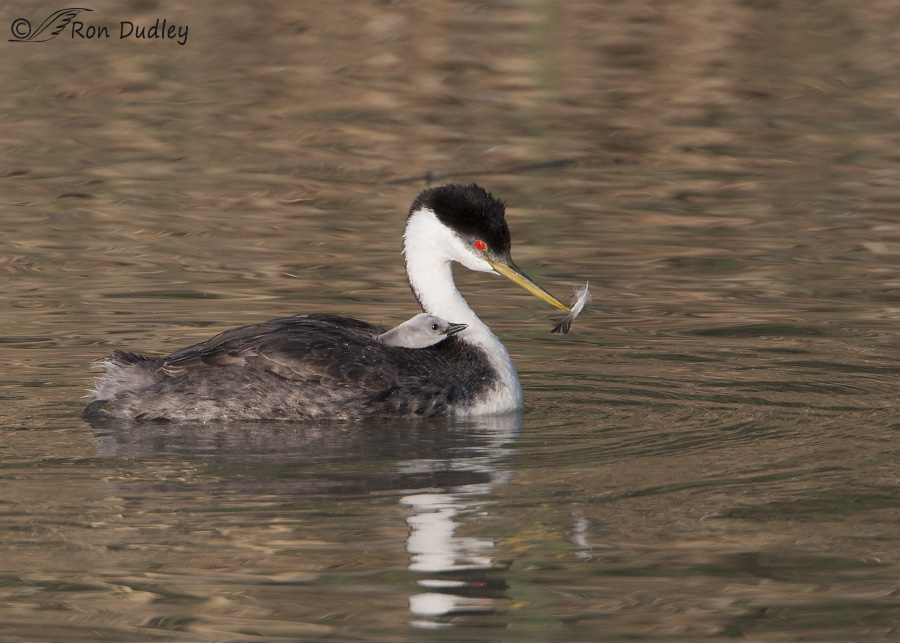
1/2000, f/8, ISO 500, Canon 40D, Canon EF 500mm f/4L IS USM + 1.4 tc, not baited, set up or called in
But the parent continued to dangle the feather in front of its offspring and interest was renewed.
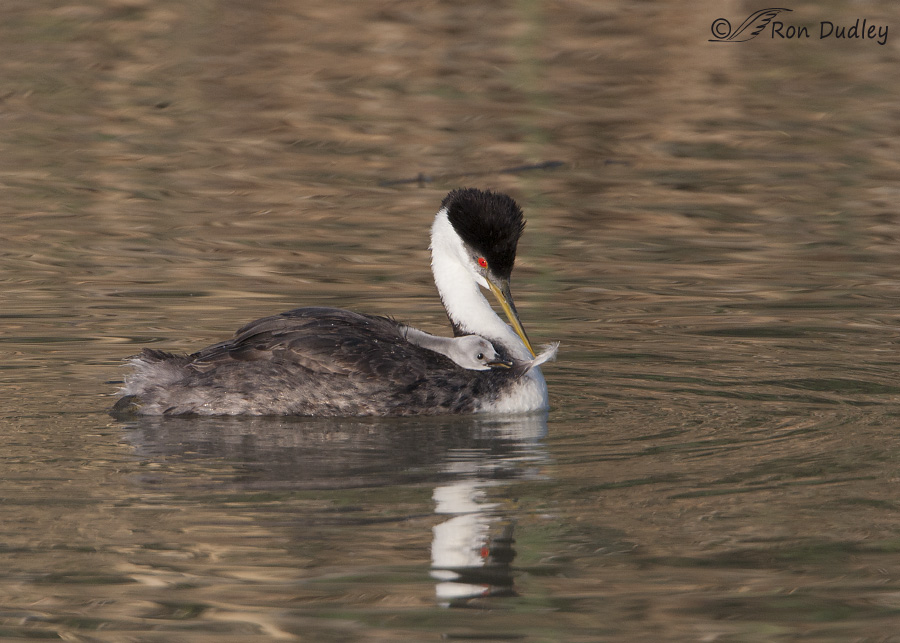
1/2000, f/8, ISO 500, Canon 40D, Canon EF 500mm f/4L IS USM + 1.4 tc, not baited, set up or called in
The chick lunged for it several times but it was always kept just out of reach.
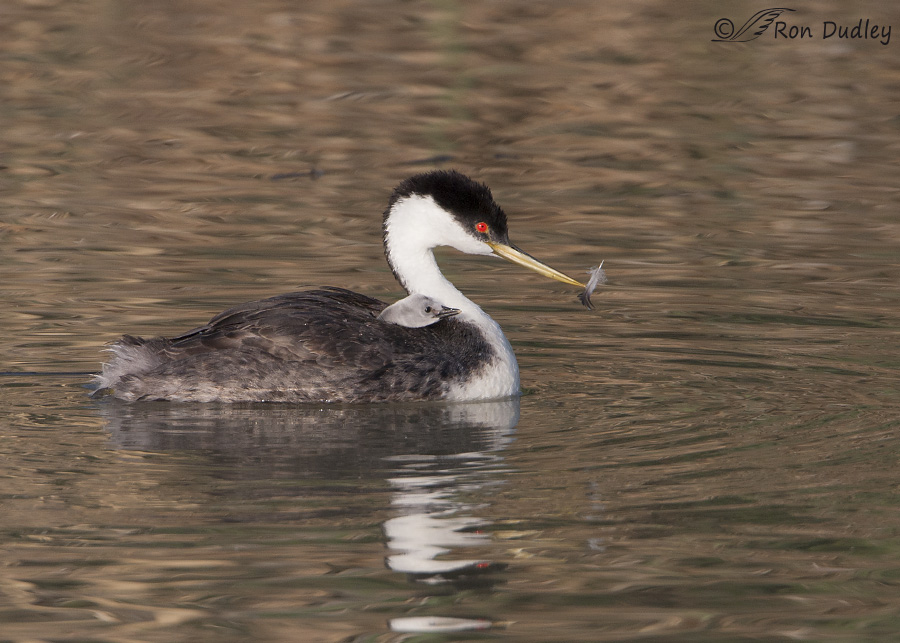
1/2000, f/8, ISO 500, Canon 40D, Canon EF 500mm f/4L IS USM + 1.4 tc, not baited, set up or called in
The adult held the feather in plain view of the chick for several more seconds and then…
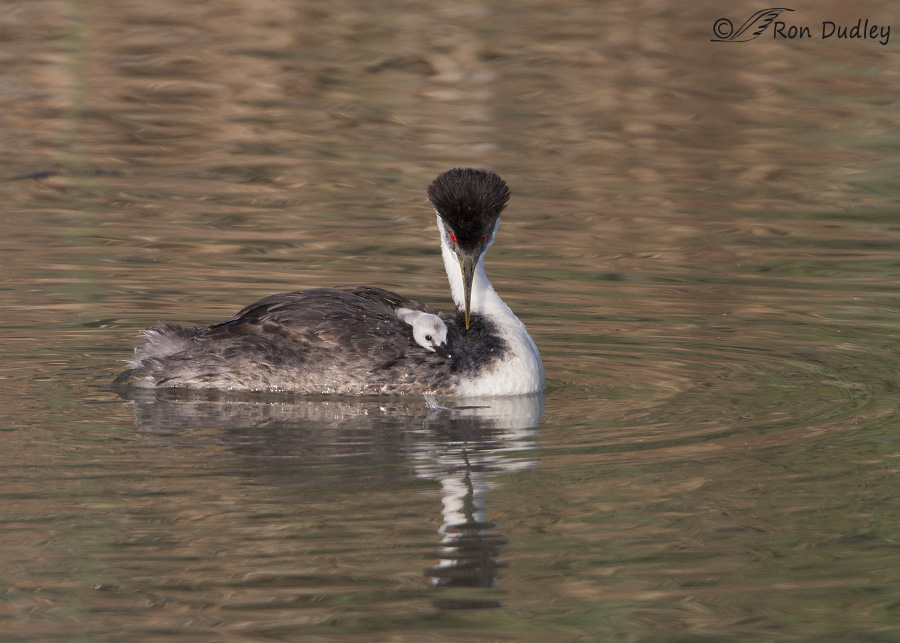
1/1600, f/8, ISO 500, Canon 40D, Canon EF 500mm f/4L IS USM + 1.4 tc, not baited, set up or called in
deliberately dropped into the water and just out of reach.
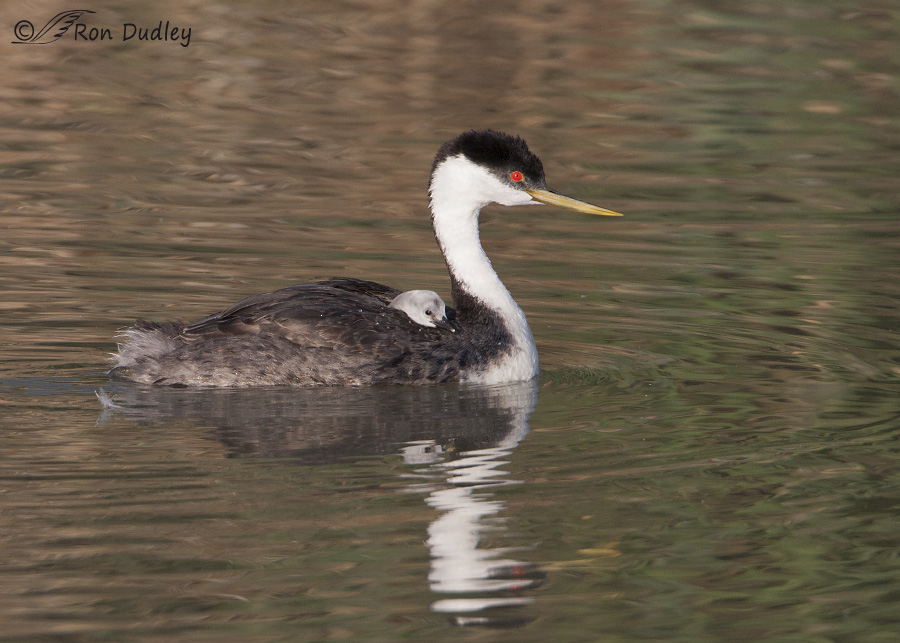
1/1600, f/8, ISO 500, Canon 40D, Canon EF 500mm f/4L IS USM + 1.4 tc, not baited, set up or called in
The youngster almost looked dejected as it watched the feather slowly drift behind them.
I can only guess what was really going on here. Most feathers eaten by grebes are soft down feathers or small contour feathers pulled out during preening but this one appeared to be a larger contour feather with a significant stiff quill so it may have been a bit too large and “prickly” for the chick to eat and the parent knew it. Perhaps the adult was only teasing the young bird into an interest in eating feathers, though I’ve seen chicks this young eating slightly smaller feathers several times in the past. Whatever the motivation for the behavior I was fascinated to watch it through my lens.
The reason for feather-eating in grebes is complex, not fully understood and beyond the scope of this blog post but I’ve covered that subject here if you have the interest.
Ron


I have so enjoyed the last several days’ posts, Ron! This one is particularly special to me as I so appreciate the behavior you captured. Not only are the images pleasing on multiple levels, but I read with utter amazement about the feather play and their biological function. Absolutely beautiful and fascinating at the same time!
Also appreciated your pictures of the female blackbird. Your portrait of her helps make the point that there is beauty all around us if we take the time to stop and see (not just look). I’m always amazed at the in-flight sound a flock of blackbirds makes when flying into the reeds at some of my photo sites. It’s been several months now since I’ve seen or heard them. I certainly look forward to their arrival back here ‘shortly’. In the meantime, thanks for the jog to my memory.
Lastly, thanks for the reminder a few days ago not to be afraid to boost ISO. I spent a few hours in sub-freezing temps the other day experimenting with it and I think it will help me get better results.
I so enjoyed your feedback on all three posts, Kim. Thank you.
And yes, I’m an enthusiastic advocate of boosting ISO’s and shutter speeds in many situations with birds. When you combine long focal lengths with subjects as active as birds those faster shutter speeds really come in handy. And most modern cameras can handle the noise resulting from higher ISO’s more than adequately.
Late to the party, Ron, but I love this post for a couple reasons. One, for the behaviors captured and the lessons passed down to the next generation. And two, because this post reminds me of how much I enjoyed an earlier post about juvenile grebes and the battle for which youngster gets to ride on the adult’s back. Thanks again for making me smile!
You remember that one! That was one of my favorite grebe behaviors I’ve witnessed and photographed, Diane. Thanks for reminding me of it.
Wonderful series Ron!
Charlotte
Thank you, Charlotte.
Terrific series. And that goes for the Link as well. I’m sure we’re all glad you were there to observe, photograph and share both your photos and knowledge. I’ll have to keep this in mind the next time I’m photographing Grebe’s. Thank you.
I’m glad to hear you enjoyed both the series and the link, Dave. Thank you.
A very interesting link…was surprised at the size size of the feather mass…can easily see how effective it can be as a filter….
I had the same reaction, Patty.
Just when I’ve been told I’m too old to learn anything – BAM! Terrific sequence of images, Ron! Fascinating stuff. I just may keep this hobby up after all.
Don’t listen to anyone who tells you you’re too old to learn, Wally. And don’t give up your hobby either. Thank you.
Great sequence, Ron. It is educational as was the link – don’t know why the bird didn’t choke on all that! Also interesting how the bile colored the feathers – I thought is was moss at first. 🙂
You’re right, Judy – it does look like a mass of moss. Thanks.
That baby is so darned cute! Love the way it’s peeking out of the parent’s wing!….you get to see, and share, such interesting behaviors….
Yes I do, Patty. Behaviors rock! Thank you.
Wonderful, educational post, Ron. And the link provided about feather eating with the necro photos was fascinating. Thanks for always going that extra mile to further explain some of the behaviors you observe to those of us who are interested in a deeper dive.
Thanks for appreciating the educational value of both posts, Gretchen. As you noticed, that link can be visited without being forced to see the necropsy photos for those folks who may wish to avoid them.